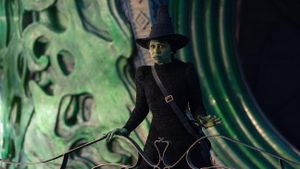The world of science recently witnessed a groundbreaking moment as the esteemed Royal Swedish Academy of Sciences announced this year’s Nobel Prize for Physics was awarded to two pivotal figures from the artificial intelligence (AI) community: Geoffrey Hinton and John Hopfield. This marks the first time the physics prize has recognized contributions made explicitly within the AI field, highlighting the increasing significance of machine learning and neural networks in scientific discourse.
The duo was honored for their foundational work related to artificial neural networks, which are inspired by the biological processes of the human brain. Their discoveries span back to the 1980s, where they laid down the groundwork for technologies currently shaping our digital lives. The Nobel Prize Committee pointed out the wide-ranging applications of their work, stating, "The laureates’ work has already been of the greatest benefit. We use artificial neural networks across numerous areas, including the development of new materials with specific properties." This not only affirms the relevance of AI technologies across various scientific endeavors but also reflects the interdisciplinary nature of modern scientific inquiry.
Geoffrey Hinton, often dubbed the "godfather of AI," is widely recognized for his contributions to the backpropagation algorithm, which is foundational for training neural networks. His insights have driven forth advancements enabling computers to understand and frame data more effectively. Hinton's decision to leave his position at Google last year was fueled by concerns over the ethical risks surrounding AI, where he expressed apprehensions about its potential misuse and the needs for regulatory frameworks to protect society from unintended consequences. He stated, "I regret my life's work as AI is too easily misused and can increase inequality or potentially subjugate humanity." His candidness about these threats brings attention to the delicate balance between innovation and responsibility—a theme echoed throughout the tech industry.
John Hopfield, meanwhile, made significant strides with his introduction of the Hopfield network—a type of recurrent neural network capable of pattern recognition. This model serves as the bedrock for methods used to improve data storage and retrieval systems today. Hopfield's exploration of associative memory closely mimics human cognitive capabilities, marking a notable leap forward for computers attempting to operate on par with human thought processes. His entry to the laureate circle showcases not merely the blend of AI and physics, where phenomena studied hint at physical laws but also the core principles governing data science.
Both Hinton and Hopfield's contributions have reverberated outside of traditional physics discussions and have engendered significant excitement about new AI-driven technologies, such as large-language models. Notably, their innovations are pivotal for breakthroughs enhancing image recognition, sound processing, and natural language comprehension—all areas fundamentally dependent on neural networks.
Despite their monumental accomplishments, not everyone within the physics community is thrilled by the decision to award their Nobel Prize to pioneers not engaged primarily with core physics research. Some critics articulate concerns over the tenuous link between fundamental physics and machine-learning research, opining, "Don’t want to minimize their achievements, but the link to physics is tenuous at best." This sentiment echoes concerns about the evaluation of contributions across different fields as science evolves rapidly.
The recognition of Hinton and Hopfield not only infuses AI with legitimacy within the physics domain but also shapes the future conversation surrounding interdisciplinary research methodologies. Ellen Moons, chair of the Nobel Committee for Physics, emphasized, "We need to adapt our perspectives on where revolutionary ideas come from, especially as boundaries between different scientific fields increasingly blur. AI stands to benefit not just the tech or business sectors but the pure sciences as well."
Diving back to their early works elucidates the progression through which modern AI capabilities evolved. For example, Hinton’s combination of gradient descent methods with neural networks established efficient means for systems to learn from vast data sets. Hinton and co-authors also introduced Boltzmann machines, which brought forth the concept of data representation and helped refine sophisticated machine learning applications.
Hopfield’s associative memory framework served as another foundational principle, demonstrating how neural nets could learn tasks by forming connections reminiscent of human experience. This ability to draw conclusions from partial data input has laid out pathways enabling computers to perform complex recognition tasks. Hopfield's models have applications stretching from computer vision to even fields such as bioinformatics and drug design.
Finally, the nobility of the prize continues to reward not only established scientists but also serves as encouragement for budding researchers venturing within the AI sphere. The Nobel Prize typically awards one million Swedish kronor (roughly $1 million) to each laureate, promoting the pursuit of research (down the line). Their honor is set to culminate with the award ceremony on December 10, commemorative of Alfred Nobel’s death, linking their contributions with historical scientific paradigms.
Looking to the future, with both laureates advocating for greater awareness and regulation, the conversation around the ethics of artificial intelligence will magnify, driving awareness on how important it is to navigate this new frontier responsibly. The prestigious award reinforces the dialogue on acknowledging AI's potential to revolutionize the world, provided the proper safeguards are evaluated and imposed to manage risks. The intertwining paths of AI research with physics not only redefine sectors but challenge paradigms on involvement across disciplines. Overall, this moment solidifies how innovation should not only be celebrated but approached with conscientiousness and foresight, making room for both advancements and caution within the rapidly-evolving scientific narrative.



